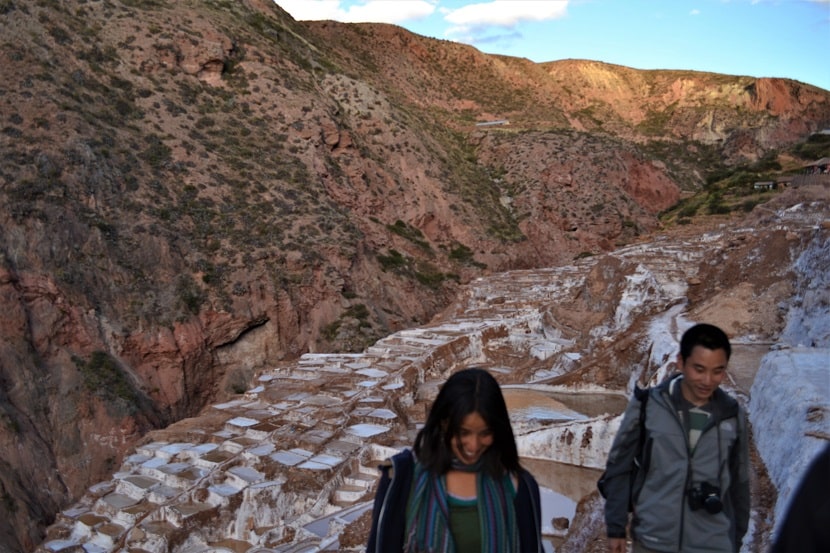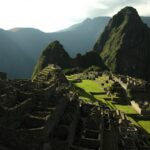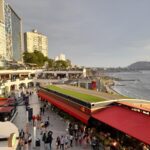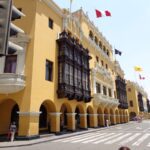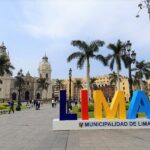If you are planning a trip to Cusco and want to visit the Sacred Valley (beyond just Machu Picchu!), you have probably heard about Maras and Moray. Read everything you need to know about these beautiful and historic destinations in the middle of the mountains!
Planning a visit to Maras and Moray?
Check out some of the best tours to Maras and Moray from Cusco.
Best tours:
1. Maras and Moray tour
2. Private tour to Maras and Moray, including the towns of Pisac and Ollantaytambo
3. ATV Quad Bike Tour to the Sacred Valley
What are Maras and Moray?
Maras and Moray are two sites near each other in the Sacred Valley in Cusco. Usually you will hear both names together since most people visit both on the same day because of their proximity to each other. They make a great day trip from Cusco, as they are just 1 and a half hours away from the city.
Maras is a site of pink salt mines, located in a beautiful scenery on the slope of a mountain. Close by, you can find Moray, mysterious archaeological remain from the Inca culture. You can find all th details about them below!
The Andean landscapes around them are really beautiful. So besides visiting the salt mines and the ruins themselves, they are great places to walk around and enjoy the atmosphere. You will be surrounded by snow-capped mountains, wheat fields and silence.
I’m Peruvian, I travel a lot around my country, and Cusco is a place I keep returning to. Out of all the interesting places there are to visit there, Maras and Moray are among my favorites.
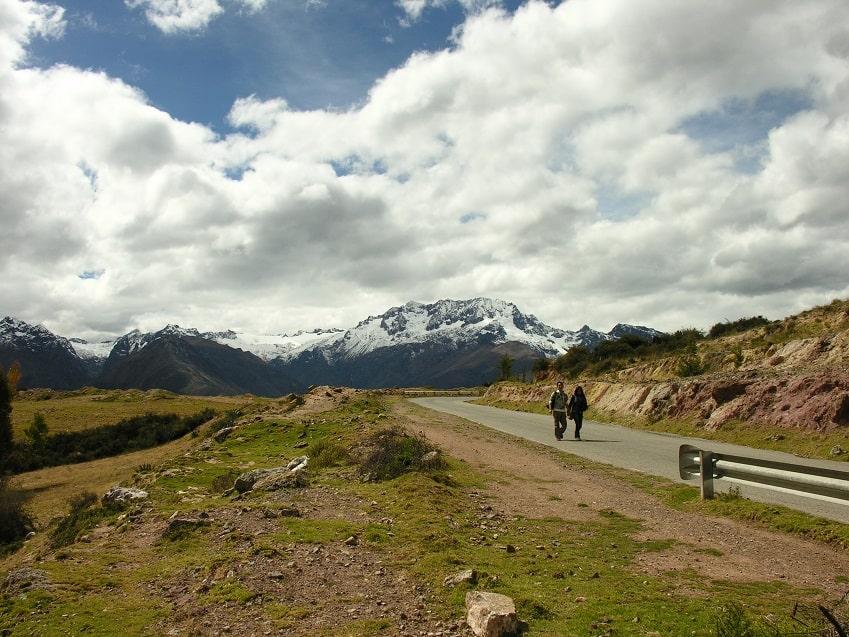

Exploring the beauty of the Maras salt mines
The Maras salt mines are a beautiful set of thousands of salt pans. The pans, which reflect the colors of the sky, are on the slope of a mountain, in the form of terraces. From there, locals harvest pink salt, one of the six kinds of pink salt in the world.
When you visit the salt mines, you will generally first go to Maras itself, a small town close by. From there, you head to the mines, from where you will have great views from the top of the mountain, before descending to see the pans from closer by. At the end, you will pass by the salt shop, where you can buy some interesting souvenirs.
How were the Maras salt mines formed?
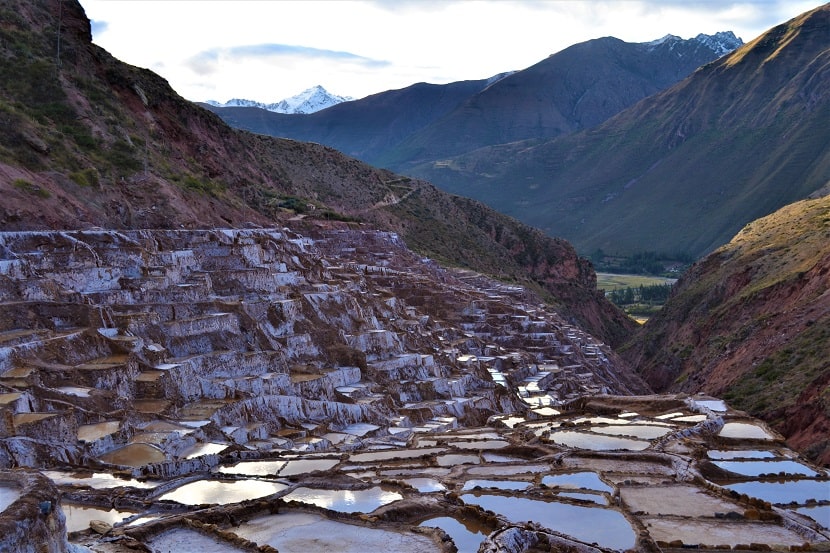
According to the legend, the salty water pools come from the teardrops of one of the mythological founders of Cusco, who was betrayed by his brothers.
At Maras, there are more than 3,000 pans of different sizes, and they are all fed by salt water that springs from the underground, from underneath the adjacent Qaqawiñay mountain.
The intense sun of the area makes the water evaporate, leaving salt crystals that are then “harvested” with a piece of wood with which the salt is scraped. The salt is then placed in small baskets to remove excess water. After a few days, the water flow is reopened and the process is repeated.
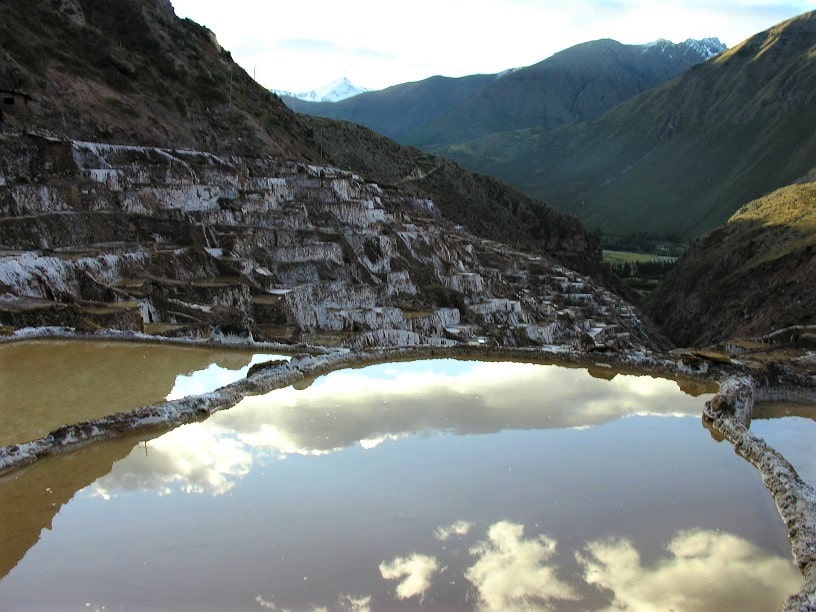
The harvest of the Maras Salt Mines over the centuries
The salt at Maras has been harvested for several centuries. The Wari civilization, which predates the Incan empire, aware of the salty water emanating from the underground, built the salt pans.
Hundreds of years later, the Incas saw a great opportunity and expanded the salt pans. From that time, the local communities have been in charge of the administration and harvesting the salt.
Even nowadays, each pan is owned and harvested by a local family, the descendants of the previous families that were administering the pans centuries ago. The salt is collected and sold in local shops or nearby towns. You can also find it in other parts of the country, though at a much higher price.
Maras salt health benefits
Maras’ salt is unrefined and high in minerals, making it healthier than regular table salt. Due to its low sodium concentration it has anti-inflammatory properties and it is recommended to regulate the blood pressure.
If you buy some salt, it is recommended to add it to your food preparation at the end, since it loses its properties if cooked at over 40 degrees Celsius (~104F).
Buy an original salty souvenir
If you are looking for an original souvenir from Cusco, don’t miss a visit to the shop.
Besides selling just the normal salt, fine and coarse, they also sell it in different flavors, like salt with garlic, chili, or lemon powder. These are actually some of my favorite products from Cusco!
Other interesting products are chocolates, candies and even beauty products and body creams, made with the pink salt. They are all unique gifts from Peru that you can take back home
Discover the ancient use of the Moray ruins
The Moray ruins are located relatively near Maras. If you go by tour, the journey between both takes just around 12 minutes. If you decide to go by yourself, the walk will take over an hour.
The ruins at Moray are concentric circles build in the shape of an amphitheater. While there are no certainties about the original use of Moray, there are different theories about it.
The food lab theory of Moray
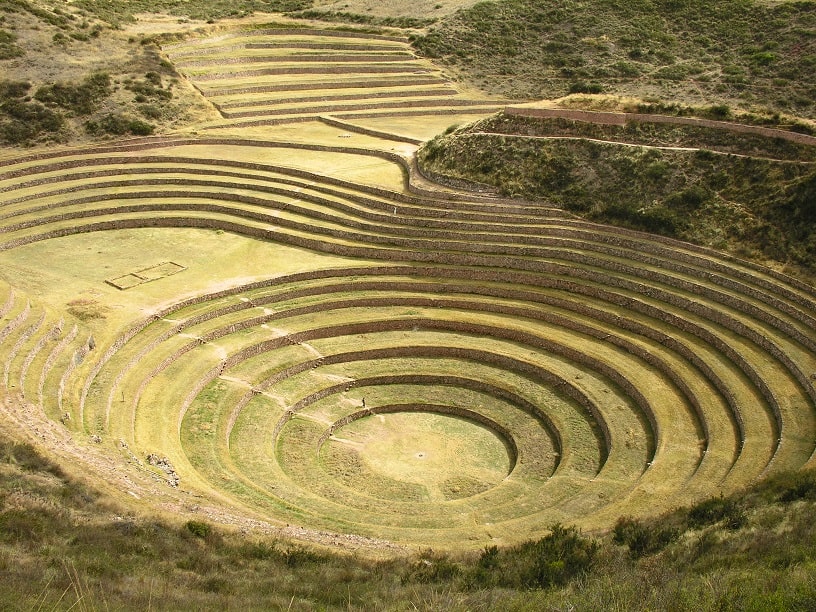
The most accepted theory is that Moray was one of the oldest agricultural experiment stations. It’s believed that it was an “outdoor laboratory“.
With a difference in altitude of around 45 meters (~150 feet) among terraces, the temperature difference from top terrace to bottom one is 12 degrees Celsius (or 27 degrees Fahrenheit), which is quite surprising. The sun hits each terrace at different angles and intensities, adding to the difference in the climates.
The result is that the terraces offer 20 different microclimates.
So the theory is that the Incas used them to study crop growth at different altitudes. These studies allowed them to know how different crops develop in different climates, thus being able to determine which crops to grow in which region.
The Inca ceremonial center theory
The nearby communities have stories dating back to Inca times of celebrations and ceremonies at Moray. Every year in October, locals still gather there to celebrate a festivity called the “Moray Raymi”. In this ceremony, local people thank the Sun for the harvest of the year.
Although Moray may have been used as an amphitheater for ceremonies, its remote location from Cusco city suggests it had other purposes too.
The stone pit theory
Building the Moray ruins into such a symmetrical and stunning structure required extensive excavation. For this reason, one theory suggests that the site was once an open-pit mine operated by pre-Incan or Incan cultures. Once the mine was exhausted, it was transformed into terraces and repurposed for Incan farming and ceremonies.

Have a meal at Mil, next to Moray
If you are visiting the area by yourself, after exploring Moray, refuel at Mil, a local restaurant owned by chefs Virgilio Martinez and Pía Leon.
If you are a fan of Peruvian food, you probably know that one of the world’s top restaurants is located in Lima, Central restaurant. Central is Virgilio Martinez’ signature restaurant, while Kjolle, also among the word’s best, is his wife’s Pía Leon’ restaurant (by the way, here you can read my review of Kjolle).
Mil is their other restaurant.
The couple continues the agricultural experimentation that was started by the Incas, and his inspiration is drawn from the rich history of the Moray ruins.
In their food philosophy, they draw upon the long-standing agricultural traditions of the local community and uses only high-quality ingredients. They are both renowned for their innovative dishes, which are created through a combination of expert preparation and mindful cultivation practices.
With the Andes Mountains in the background, you will enjoy a meal surrounded by the beauty of the Moray Inca ruins.
If you are up to a more unique experience, you can get the Mil “Immersion” experience. This starts in the early morning and includes a visit to the Moray ruins, to the local communities whom with they work their fields, a botanical route around the hills surrounding Mil, a gastronomic experience and more. This can be an unforgettable experience, though it’s much more expensive than just going for lunch.
How to get to Maras and Moray from Cusco
Located 52km (~32 miles) from Cusco, the journey takes around 1 hour and 30 minutes. There are multiple ways to visit the Maras and Moray. The easiest one is by taking a tour.
By tour to Maras and Moray
The most common option is to go on a tour from Cusco, which takes about 5-6 hours round trip. The tours include a visit to both Maras Salt Mines and Moray ruins. After taking some memorable photos and buying souvenirs from the local shop, the tour ends with a return to your hotel in cusco, or to a central area, like the main square.
- Group tour: This is a good tour to Maras and Moray, which includes hotel pick-up and drop-off in Cusco.
- Private tour: If you are looking for a private tour, this one is a great option. It’s a full day trip from Cusco, which also includes a visit to the towns of Ollantaytambo and Pisac.
- ATV Quad Bike Tour: For an adventurous experience, consider taking an ATV Quad Bike Tour to Maras and Moray. They will take you to the town of Cruzpata, and from there you’ll ride through the scenic Sacred Valley before reaching the salt mines for a guided tour. They have both morning and afternoon tours.
By colectivo (shared taxi)
If you want to experience the journey like a local, that’s also possible, though a bit more complicated. It will also take you the whole day.
You will need to take a shared taxi at Calle Pavitos (Pavitos Street), from Cusco to Urubamba. You will have to ask the driver to drop you off at the road, at Maras. From Maras town, you will have to walk to the salt mines. After visiting Maras, you will have to either take a taxi or walk to Moray.
From Maras, you can take a taxi to Urubamba and take a shared taxi from there to Cusco. Otherwise, you can wait at the road and wait until a van heading to Cusco passes by.
By Private Taxi
The last option is to hire a private taxi driver to take you to the salt mines, wait for you while you explore, and then return you to your starting location. Although this option allows you to go at your own pace, it is the least popular and most expensive choice.
What are the opening times of Maras and Moray?
Maras and Moray are open between 7am and 5pm.
If you travel to Cusco, make sure not to miss a visit to take a day trip from Cusco to Maras and Moray. They are must-sees and make for a great way for travelers to explore Peru’s Sacred Valley of the Incas.
